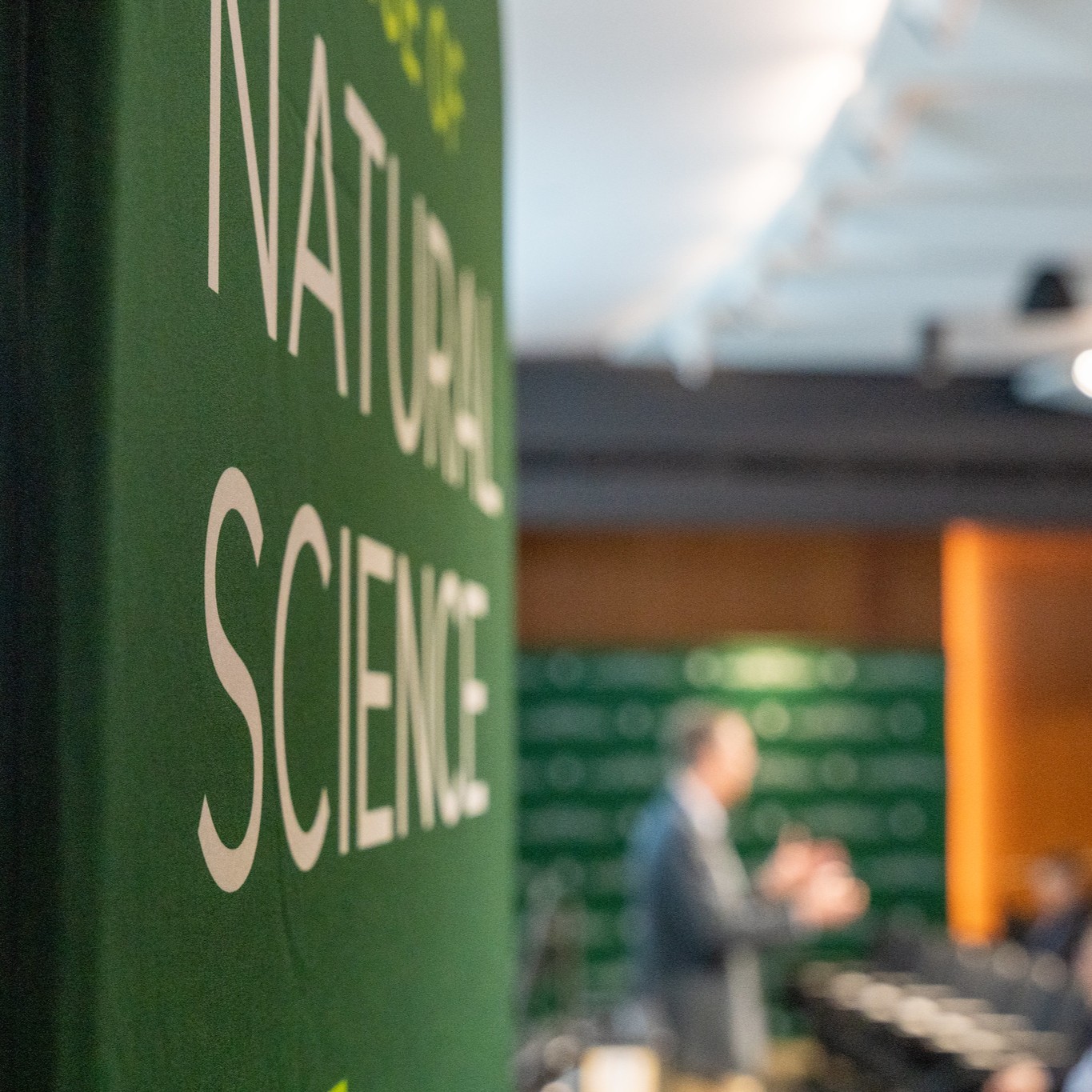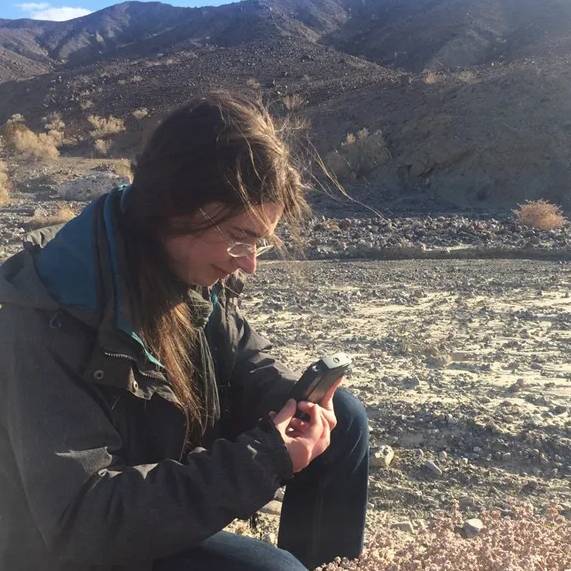Turning red: can pigmentation protect plants from harmful fungi?
Two PLB graduate students are seeking out answers with a high-risk, high-reward seed grant
Many plants feature extrafloral nectaries – glands on leaves and stems which secrete
nectar. These nectaries are proposed to attract insects that act as bodyguards for
the plant, which in turn feed on the sugary secretion and keep would-be plant-eaters
at bay. Yet, there may be another strategic tradeoff at play. Just as these pores
allow nectar to seep out, they may provide an ingress point for pathogens and fungi.
However, these nectaries sometimes demonstrate high concentrations of a compound called
anthocyanin: a red pigment known to help some plants develop antifungal defenses.
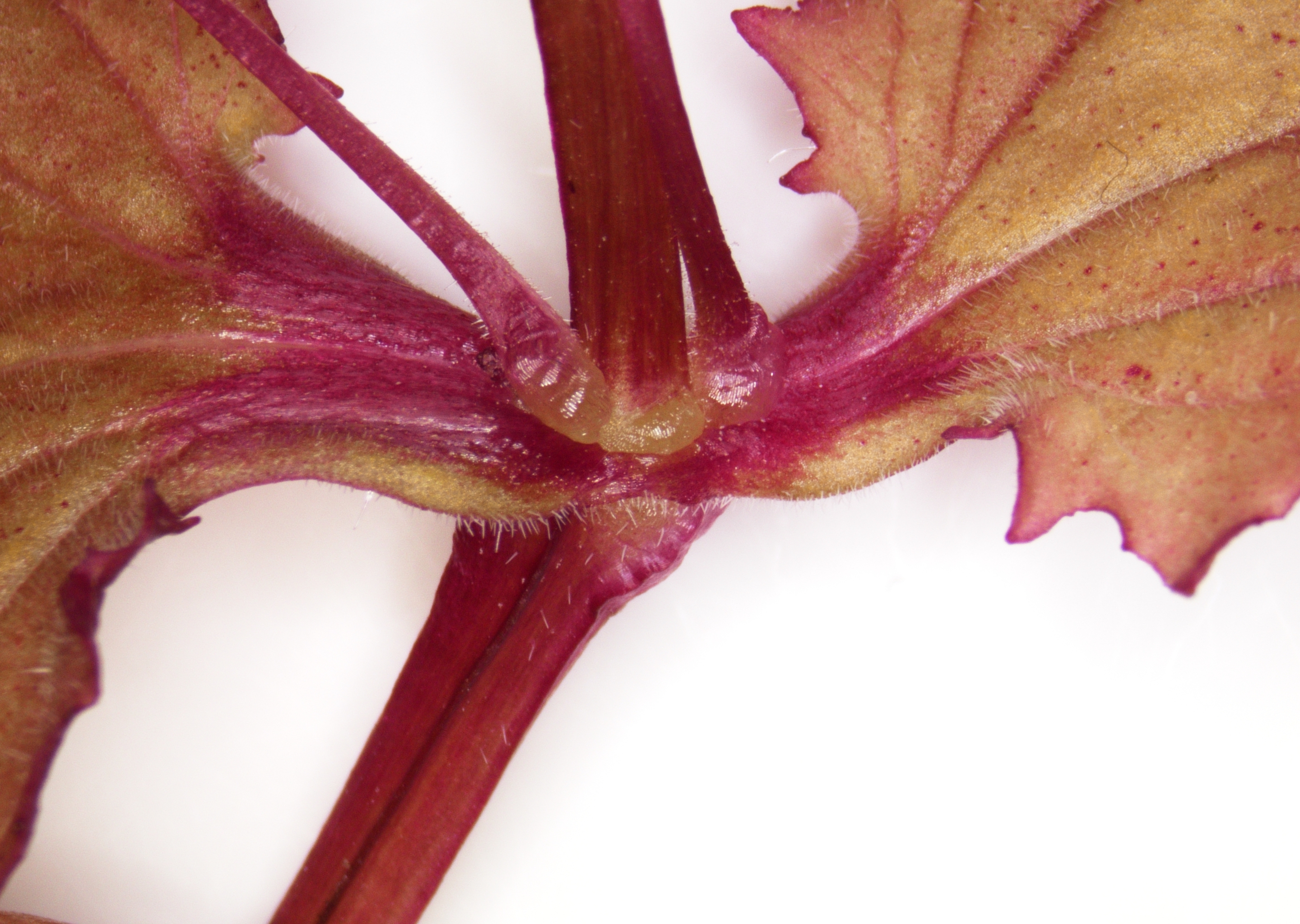
Sylvie Martin-Eberhardt and Madison Plunkert, both graduate students in the department of Plant Biology, propose that the antifungal qualities of anthocyanin may provide plant biologists with tools to combat harmful fungal diseases. These phytopathogenic fungi — species of fungi that attack plants — can kill nearly a quarter of crops worldwide anually.
These lost crops could feed between hundreds of millions to several billions of people each year; however, the development of commerical fungicides is time-and-resource-intensive. From development to deployment, it can take more than a decade and hundreds of millions of dollars to bring a treatment to market.
With support from the department of Plant Biology, and funding from MSU’s Plant Resilience Institute in the form of a seed grant, these researchers are combining their expertise to investigate whether anthocyanin pigments protect extrafloral nectaries from fungal disease. Understanding whether plants can be engineered to better resist fungal infections may help scientists identify alternatives to fungicides — ones that could be cheaper, easier and faster to put into action.
However, getting this project off the ground entailed a learning curve of its own.
Madison and Sylvie overcame multiple challenges to plan a succesful project; from
identifying a research question that leveraged their combined strengths and drafting
a proposal, to making their project run smoothly while the two were stationed 60 miles
apart.
Now, with a spate of funding available from both the Plant Resilience Institute and the department of Plant Biology, they've sat down to talk about what worked, what didn't & what they wish they'd known, to help take some of the guesswork out for future applicants.
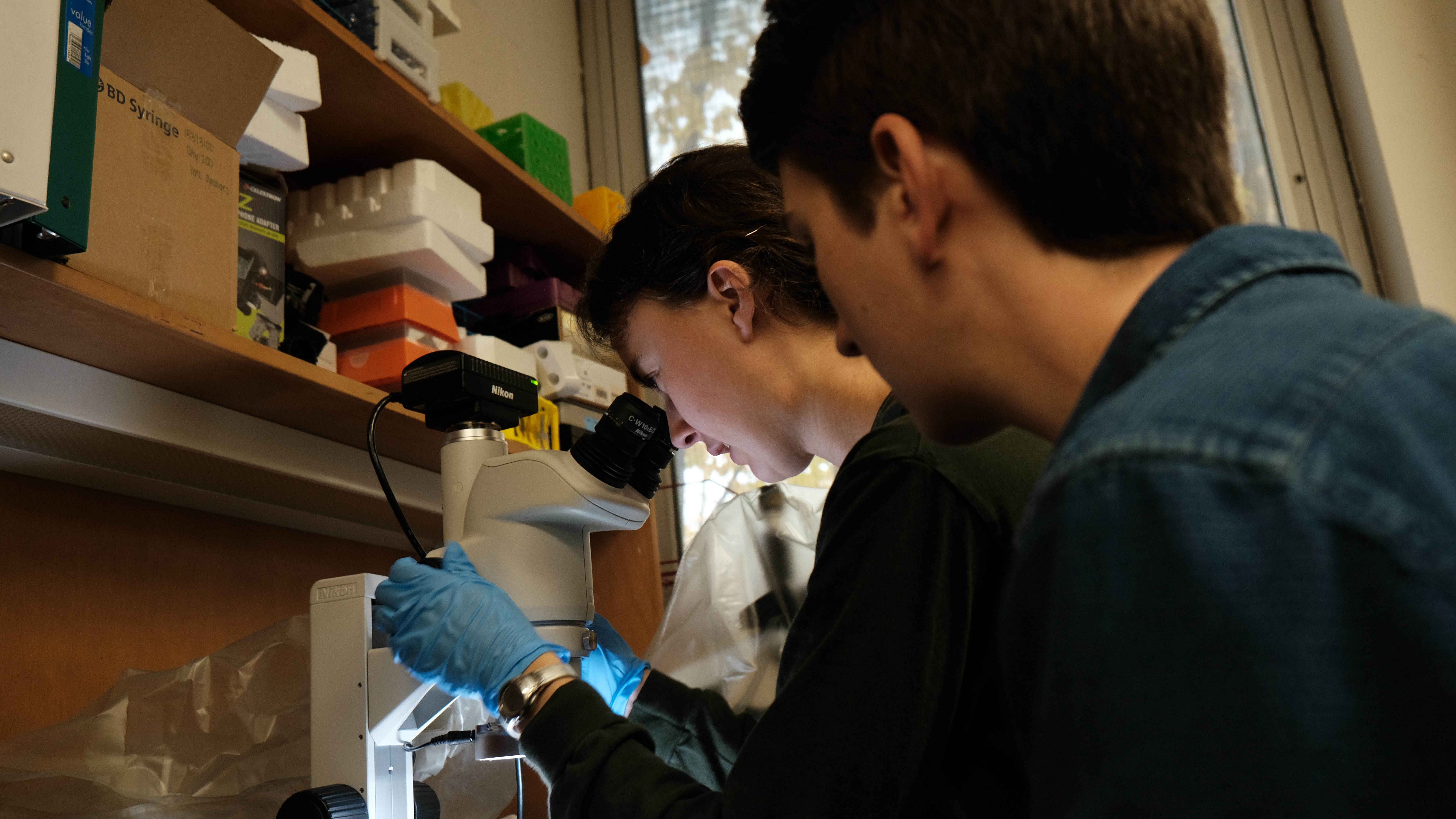
Sylvie: We are interested in a plant structure called an extrafloral nectary. Plants from almond trees to cucumbers excrete sugary nectar in places other than the flower, not to attract pollinators, but to attract ants and other predatory insects that defend the plant from herbivores. Ants can defend a plant from other insects as well as from something as big as a giraffe! These relationships are an incredibly effective mutualism where the ants get fed, and the plants get bodyguards. However, funguses feed on sugar, too, and may colonize these nectaries. If fungi outcompete helpful insects, these nectaries can invite harm, rather than help. However, many extrafloral nectaries are conspicuously red-colored; in most plants, red coloration comes from a suite of compounds called anthocyanins. Anthocyanins are responsible for the striking hues of everything from blueberries to red cabbage. In fruits, anthocyanins can reduce fungal growth, so we hypothesize that, due to the presence of anthocyanins, red extrafloral nectaries might be less susceptible to fungal attack. To investigate this possibility, we are working with a plant that makes red extrafloral nectaries, Erythranthe angulosa to put the anthocyanin pathway into overdrive.
Madison: Sylvie and I both became interested in anthocyanin pigments separately as undergraduates. I had worked on genes that regulate pigment synthesis and Sylvie had investigated anthocyanin variation in nature. When we arrived at MSU, we had lots of fun chatting about anthocyanins, and gained insight by talking about this same compound from different perspectives. We knew we wanted to work together on an anthocyanin project, but we didn’t know how. When we reached the thesis proposal stage of graduate school, we each read each other’s thesis drafts, so Sylvie knew that I was manipulating genes in monkeyflower and I knew that Sylvie was testing anthocyanin function in extrafloral nectaries. Around the same time, my lab mate Dr. Lauren Stanley developed a new technique for genetic transformation that works on some of the more stubborn monkeyflower varieties. We realized that in the monkeyflower system, I could generate plants with high and low levels of anthocyanins that are otherwise genetically identical, so we would know that any differences Sylvie finds in extrafloral nectary susceptibility to fungi must be due to the anthocyanin level. That experiment would show us whether anthocyanins help protect extrafloral nectaries from fungal pathogens. More broadly, we’re hoping to understand this puzzle where a plant defending itself from herbivores by attracting ants with extrafloral nectar also opens it up to fungal infection. How do plants handle multiple sets of challenges?
Sylvie: From my end, this whole project started when Madison saw a talk at a conference about
a newly described species of monkeyflower that creates extrafloral nectaries — the
first known occurrence of this trait in this group of plants. I had already been thinking
about extrafloral nectaries in other species of plants; I was first introduced to
this question when I interviewed at MSU -- my now-advisor, Marjorie Weber, had been
studying these nectaries for years and noticed that many are red colored. She posed
the question to me that’s driving this project: why did I think this trait might be
beneficial to the plant?
I was stumped then, and didn’t have a better answer when I was two years into my PhD.
At that time, I was putting together my dissertation proposal. I realized that no
one had the answer, so investigating this question across many species of plants became
the last chapter of my dissertation. When Madison came to me with a plant species
that produces nectaries and might be genetically transformable, I was excited by the
possibility of taking my broad scale across-species idea that anthocyanins in extrafloral
nectaries might defend against fungus, and approach the question from a molecular,
mechanistic side in a single species.
Sylvie: Madison and I are both fourth year graduate students, and got to know each other in our incoming cohort in Plant Biology. I am a plant-insect evolutionary ecologist, with special interest in anthocyanin pigments and carnivorous plants. Most of my work is conducted in Michigan’s peat bog habitat working with pitcher plants, and I supplement my fieldwork with greenhouse, herbarium, and laboratory bioassays using live insects. This project is more molecular than anything else I have done in my PhD, and has been a fun collaboration to explore new methods and ways of looking at a plant.
Madison: I work on molecular genetics in monkeyflower. I spend a lot of time testing out which genes help a monkeyflower live as an annual or a perennial by manipulating their sequence and expression level in plants in the lab. A lot of what I do boils down to gene hunting: find a gene that I think affects plant traits, break that gene in a plant, and see if the trait changes. This time, I’m working with the well-studied anthocyanin pathway so I’m pretty sure we’ll get the expected effects on anthocyanin level. So the question is not “what does this gene do?” but rather “what are the consequences (for fungus susceptibility) of what this gene does?”
Madison: I think of my main role in this project as using transgenics to make a good experimental system for Sylvie. As a molecular geneticist, I can use what we know about the anthocyanin pathway to make plants that have no anthocyanin or produce excess anthocyanin. And the rest of my research is in monkeyflowers, so I have the familiarity with our study species that comes from working on the same plant for three years.
Sylvie: In my collaboration with Madison, I am designing bioassays with fungus and living plants, and also helped with the mapping and field skills needed to find a rare plant from others’ written records. It was quite a scientific treasure hunt, and a fun challenge to track down a single rock face in the Sierra Nevada mountains where these plants are known to live. Part of my job in this collaboration was also to expand our ecological knowledge of this newly described plant, from looking for pollinators to doing ‘herbivore forensics’ to guess what kind of animal caused damage on a plant to cataloging the specific insects that visit the nectaries.
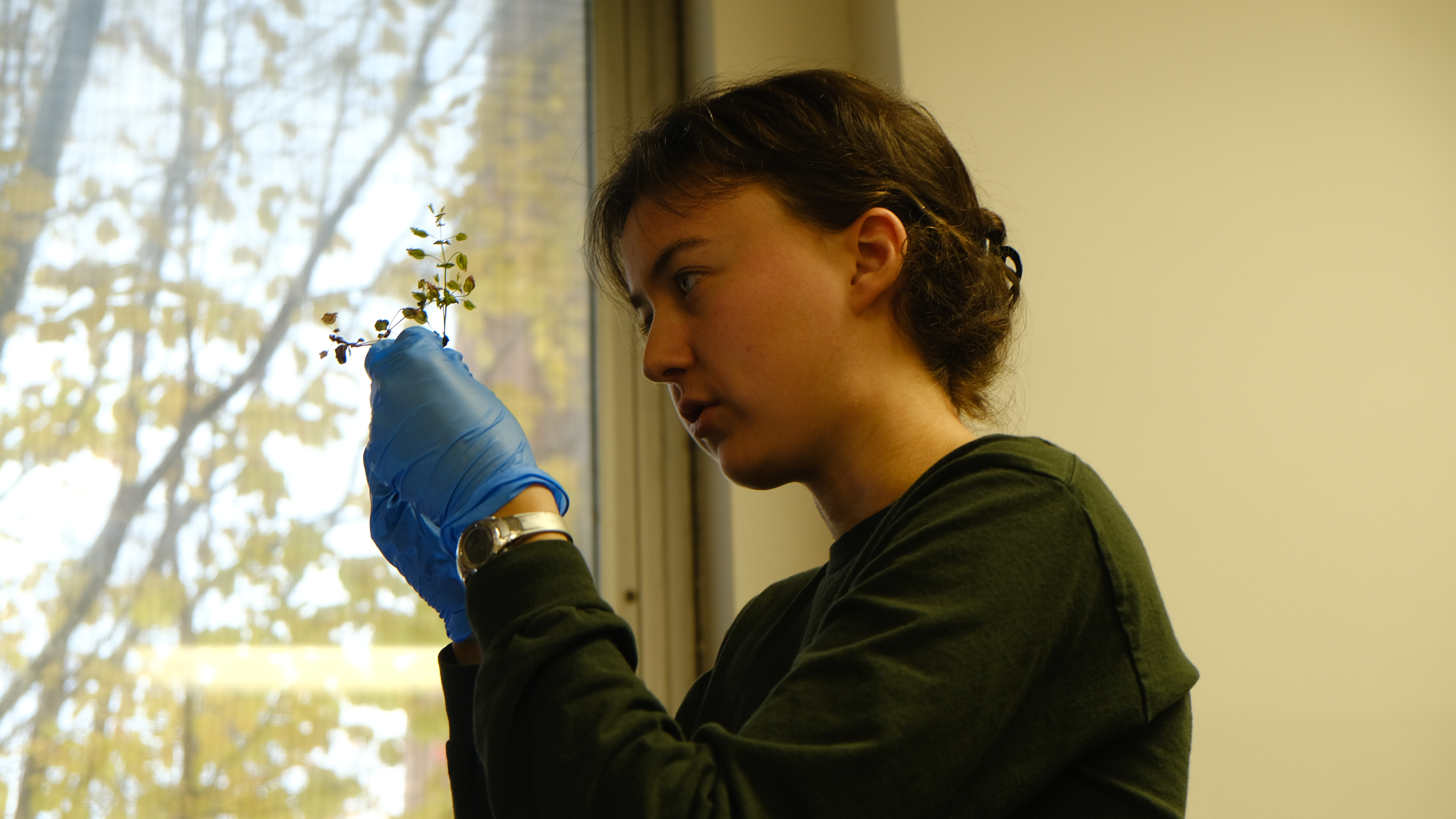
Sylvie: We had a lot of fun putting the proposal together. We had so many ideas that we didn’t include, both in the process of honing our project, and because the proposal is so short! We had to make an ‘outtakes’ file of all the details and ideas we couldn’t include. It was exciting to think about all the possibilities with a $10,000 budget. Before we knew about the seed grant, Madison and I were trying to figure out how we might be able to pull this project off on a shoestring budget. Imagining this project with PRI funding let us design a more robust, fleshed-out project.
Madison: Once we decided to go for it, we blocked off a full day to spend at Sylvie’s house drafting the proposal. We came in with just our vague idea of messing with anthocyanin genes and infecting the plants with fungi. Throughout the day, we sketched out potential experimental designs, budgeted our major expenses, and wrote the draft. Since it’s just two pages, we had the bones of the proposal by the end of that day. We each put in a bit more time afterwards following up on lingering questions, sharing the draft with my lab for feedback, and making edits. One new challenge for me was budgeting a project of this size. It was easy to get bogged down in the details of how many $7 sequencing reactions we would need or the cost of cheap reagents, and really what we needed to do was focus on major expenses like travel and growth chamber space.
Sylvie: Exciting! I think it worked well for two reasons: Madison and I had two years of grad school under our belts by the time we were putting this together, so we had some past experience writing grants and proposals with our advisors to fall back on. That, and our expertise was so complementary, it was clear what part of the experimental design was whose job, and we’d both already designed experiments for large chunks or our dissertations, so this was nice next step to design a study independent from our PIs. We did take the completed application to Madison’s lab meeting, and that was a helpful chance to get feedback from postdocs and late-stage graduate students.
Madison: The high-risk high-reward aspect of the PRI seed grant funding was really freeing. In most other contexts, faculty mentors in your life are supposed to point out all the potential pitfalls that could make a project fail. It was so exciting to let the “but what if it works?” voice in my head speak for two pages on the grant application.
The thesis proposal that all PLB grad students write at the comprehensive exam stage was a real turning point for me to be ready to do something like this. It's hard to write a document like that, and once you do it, you’re substantially further along to becoming an independent scientist. My advisor David’s research program is also super broad already, so other members of the lab routinely step outside of his exact research interests to bring in new questions, and he has encouraged me to develop intellectual independence by working with other mentors and studying new questions.
Sylvie: We heard about the seed grant at the PRI retreat in the fall of 2023. Madison had already had the idea then, and the possibility of funding just made the whole project seem that much more viable and exciting. I think this grant was really designed to fill a gap left by the NSF to offer substantial (for a PhD student) but small (for the NSF) grants to mid to late-stage graduate students, and I think it's a powerful way to support trainee independence and projects that are risky but valuable.
To identify other funding, I think that’s very field specific. I’ve applied for and received independent funding from professional societies as well as my home department; graduate student specific research grants are great ways to hone your grant-writing skills, build intellectual independence, and open up possibilities for new directions in your work.
Madison: It really helps to have examples of successful grant proposals to look over, so I suggest asking other people to share their previous applications with you. I’ve also learned a ton from lab meetings where we discuss draft proposals as my advisor is writing them for NSF or other funding because it gave me a closer view of the grant-writing process.
Sylvie: This is my first experience with a cross-lab collaboration, and I’m really enjoying it. It definitely comes with logistical challenges; in our case, our two lab spaces are a little over 60 miles apart. Despite the increased travel and complexity in coordinating supplies, samples, and specimens, the breadth of expertise and perspective that is gained by collaborating across labs is well worth it.
But balancing this against other obligations is definitely a challenge; Madison and I decided to split this project about as evenly as possible, and so it's not a dissertation chapter for either of us. The skills required from each of us ties in nicely to our other projects, and that keeps it manageable so we can each work on it on the side and make significant progress even in a short time. I know other recipients have balanced the leadership and time commitments differently, but for us, keeping it within our existing joint expertise was key.
Madison: I definitely let plants tell me how to manage my time (maybe more than I should). It takes several months for plants I've transformed with genetic material to develop mature seeds and for those seeds to grow into the plant I want. So, for this project, and for a lot of my work, I hurry up and deliver my gene to the plants, and then work on something else while I’m waiting for them to grow. For example, I just finished putting a gene into our species that will hopefully lead to high anthocyanin production. While I wait to see if that worked, I’ll focus on other projects. I use those waiting periods to decide which projects to set on the front and back burner at any given time.
I had a tough couple of months this past fall where I was really struggling to make a DNA construct for another gene I was working on so that I could put that gene into plants. I spent every day moving small volumes of liquid around to make the gene deliverable to plants, and every time I thought I had succeeded, I'd sequence the construct and find out it wasn’t what I had intended to make. At the same time, I did some sequencing to identify fungi that Sylvie had cultured from extrafloral nectaries, so we could choose a biologically realistic fungus for our experiment. When I got the sequencing results back, I called Sylvie to share the news and found so much joy in finally having a success. For me, this is a bright spot of working on multiple projects. Coping with disappointment and repeated failure is one of the hardest parts of science and if I have a few things brewing, one of them is probably going well at any given time. It’s enough to get me back in the lab to try again.
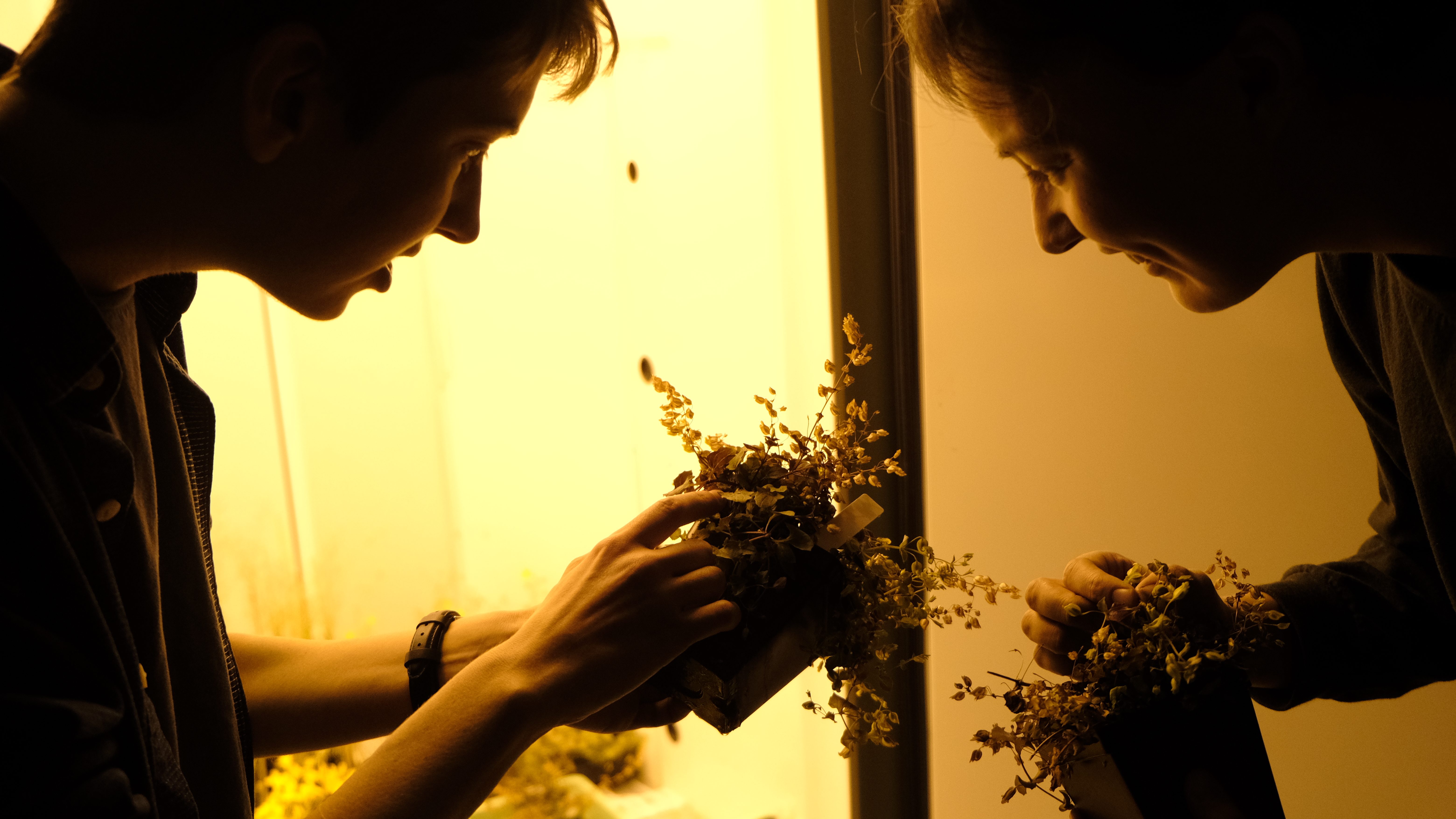
The department of Plant BIology offers an extenive array of funding opportunities to support students' research, travel and professional development.
The PRI Seed Grant program empowers graduate students and postdoctoral researchers at MSU to take ownership of bold, independent research ideas that push the boundaries of plant resilience science. This funding allows researchers to move beyond the limitations of existing resources, enabling innovative projects that might not otherwise be possible.
The program also fosters meaningful cross-lab collaborations, bringing together diverse expertise to tackle high-risk, high-reward questions. If you have an idea that fits PRI’s mission of advancing plant resilience, and want to develop your skills as an independent scientist, consider applying for this spring’s seed grant competition. Eligible applicants include MSU graduate students and postdoctoral researchers, with at least one Co-PI affiliated with a PRI lab. Applications are due by 5:00 pm ET on March 1, 2025 — don’t miss the opportunity to turn your research vision into reality.
